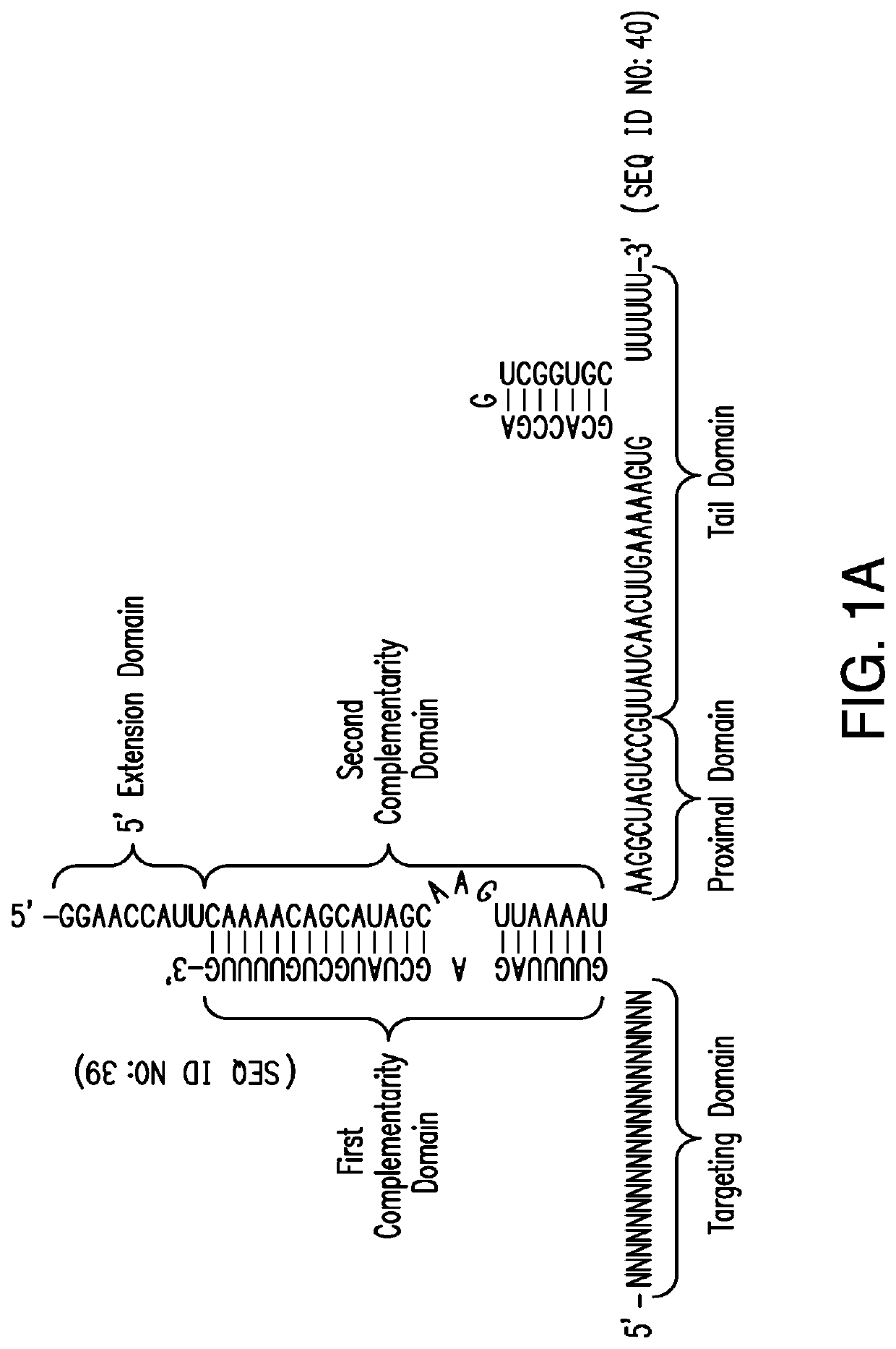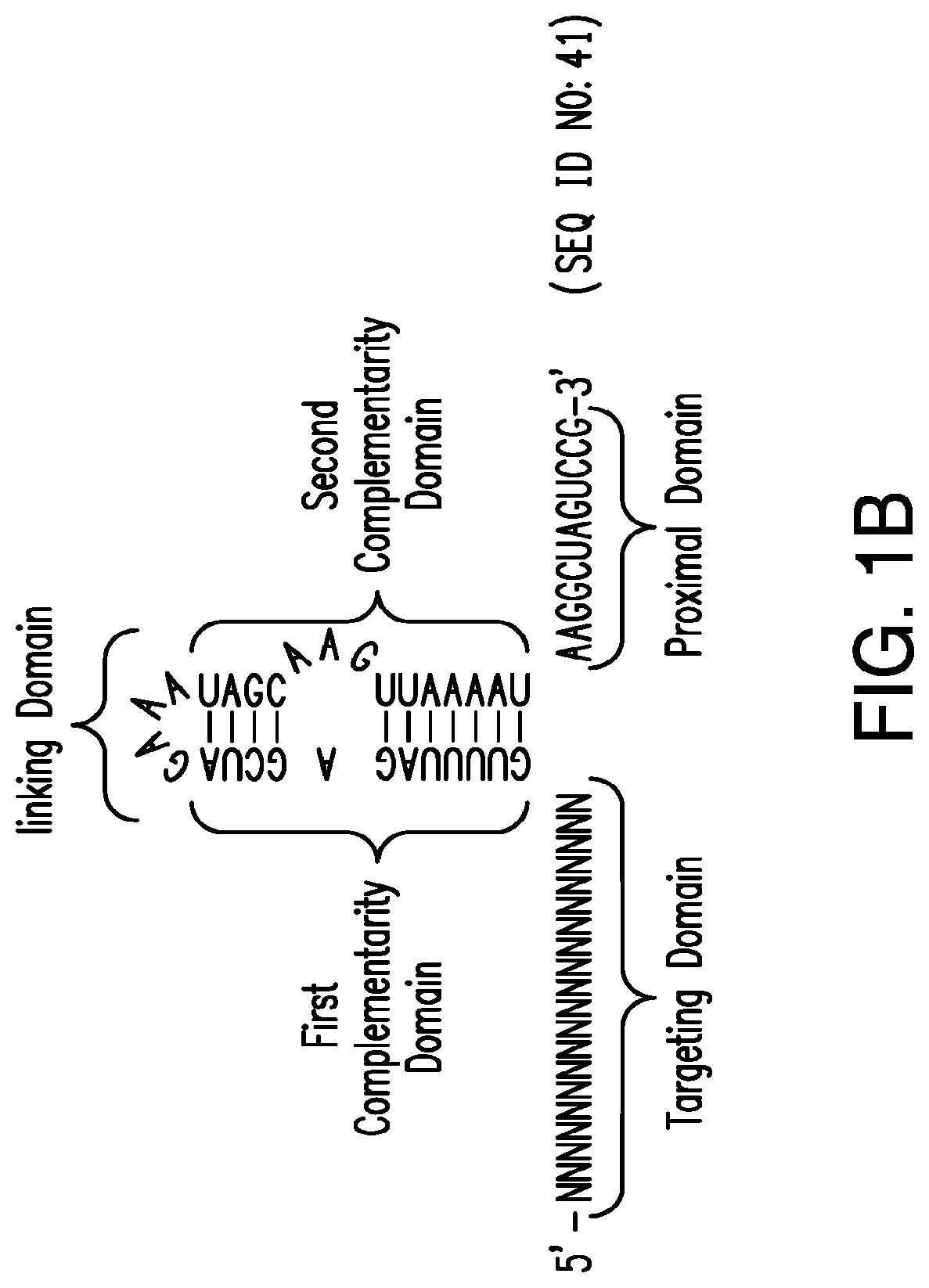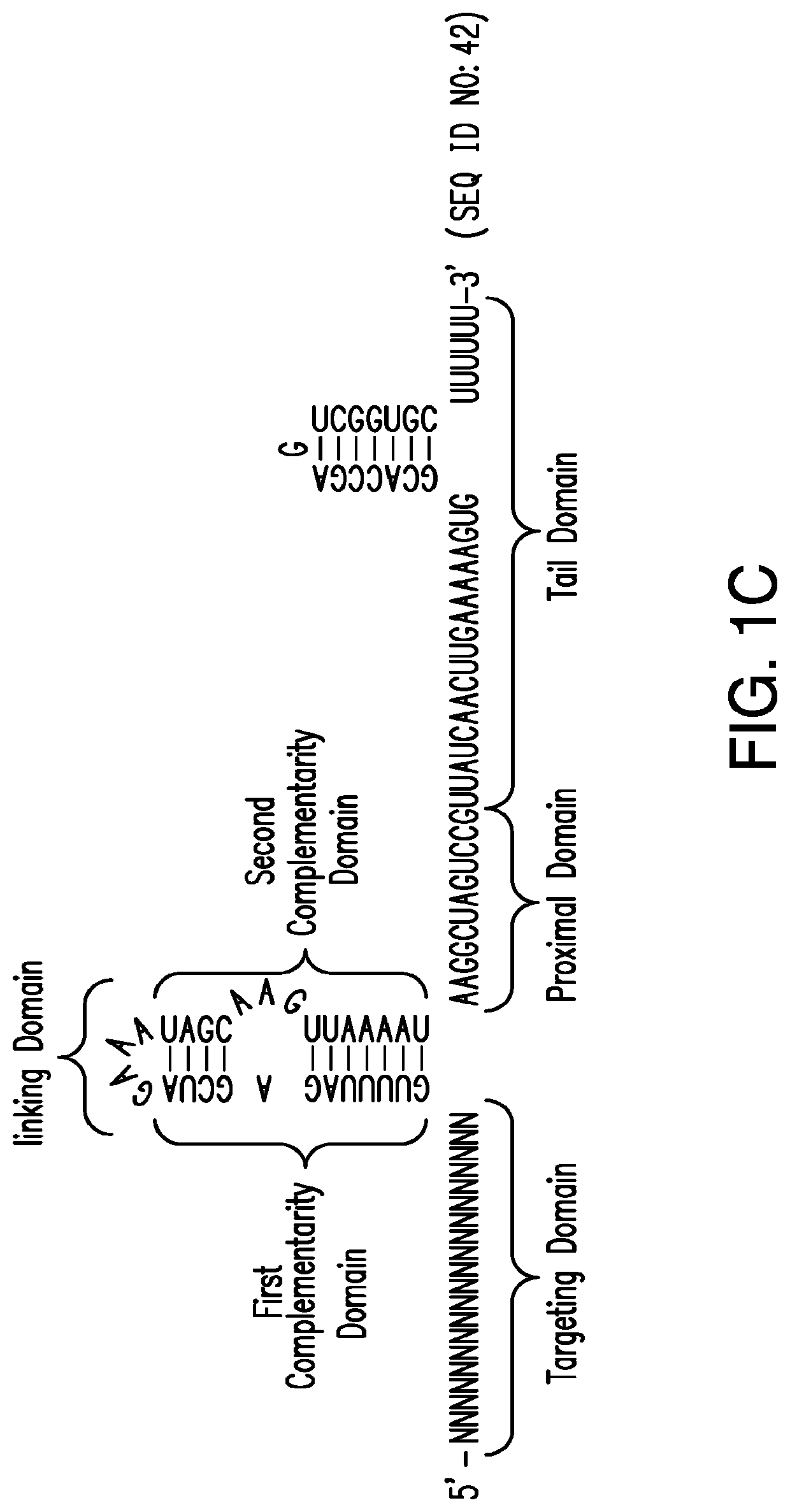CRISPR/Cas-related methods and compositions for treating herpes simplex virus
a technology composition, applied in the field of herpes simplex virus related methods and compositions, can solve the problems of increasing the risk of hiv infection, hsv-related retinitis, and pain in the mucous membranes of lips, mouth and nose, so as to reduce, reduce, reduce, or eliminate the expression of the rl2 gene product.
- Summary
- Abstract
- Description
- Claims
- Application Information
AI Technical Summary
Benefits of technology
Problems solved by technology
Method used
Image
Examples
example 1
n of Candidate Guide RNAs (gRNAs)
[1200]The suitability of candidate gRNAs can be evaluated as described in this example. Although described for a chimeric gRNA, the approach can also be used to evaluate modular gRNAs.
[1201]Cloning gRNAs into Vectors
[1202]For each gRNA, a pair of overlapping oligonucleotides is designed and obtained.
[1203]Oligonucleotides are annealed and ligated into a digested vector backbone containing an upstream U6 promoter and the remaining sequence of a long chimeric gRNA. Plasmid is sequence-verified and prepped to generate sufficient amounts of transfection-quality DNA. Alternate promoters maybe used to drive in vivo transcription (e.g. H1 promoter) or for in vitro transcription (e.g., a T7 promoter).
[1204]Cloning gRNAs in Linear dsDNA Molecule (STITCHR)
[1205]For each gRNA, a single oligonucleotide is designed and obtained. The U6 promoter and the gRNA scaffold (e.g. including everything except the targeting domain, e.g., including sequences derived from the...
example 2
t of Gene Targeting by NHEJ
[1212]The gRNAs that induce the greatest levels of NHEJ in initial tests can be selected for further evaluation of gene targeting efficiency. In this case, cells are derived from disease subjects and, therefore, harbor the relevant mutation.
[1213]Following transfection (usually 2-3 days post-transfection) genomic DNA may be isolated from a bulk population of transfected cells and PCR may be used to amplify the target region. Following PCR, gene targeting efficiency to generate the desired mutations (either knockout of a target gene or removal of a target sequence motif) may be determined by sequencing. For Sanger sequencing, PCR amplicons may be 500-700 bp long. For next generation sequencing, PCR amplicons may be 300-500 bp long. If the goal is to knockout gene function, sequencing may be used to assess what percent of viral copies have undergone NHEJ-induced indels that result in a frameshift or large deletion or insertion that would be expected to destr...
example 3
t of Activity of Individual gRNAs Targeting a Synthetic HSV-1 Construct
[1214]A plasmid containing HSV-1 sequences was constructed as a reporter to measure Cas9-mediated cleavage of target DNA. This reporter plasmid, pAF025, encodes a Green Fluorescent Protein (GFP) driven by a CMV promoter. The target HSV-1 sequences were inserted in frame with the GFP, at its N-terminus, with a P2A self-cleaving peptide sequence between them.
[1215]gRNA molecules were identified using a custom guide RNA design software based on the public tool cas-offinder (Bae et al. Bioinformatics. 2014; 30(10): 1473-1475). Each gRNA molecules tested in this example and listed in Tables 18 and 19 were generated as a STITCHR product and co-transfected with a plasmid expressing the S. aureus Cas9 (pAF003) into HEK293FT cells. The pAF003 plasmid encodes the S. aureus Cas9, with N-terminal and C-terminal nuclear localization signals (NLS) and a C-terminal triple flag tag, driven by a CMV promoter. gRNA and
[1216]Cas9-e...
PUM
| Property | Measurement | Unit |
|---|---|---|
| temperature | aaaaa | aaaaa |
| pH | aaaaa | aaaaa |
| volume | aaaaa | aaaaa |
Abstract
Description
Claims
Application Information
 Login to View More
Login to View More - R&D
- Intellectual Property
- Life Sciences
- Materials
- Tech Scout
- Unparalleled Data Quality
- Higher Quality Content
- 60% Fewer Hallucinations
Browse by: Latest US Patents, China's latest patents, Technical Efficacy Thesaurus, Application Domain, Technology Topic, Popular Technical Reports.
© 2025 PatSnap. All rights reserved.Legal|Privacy policy|Modern Slavery Act Transparency Statement|Sitemap|About US| Contact US: help@patsnap.com



